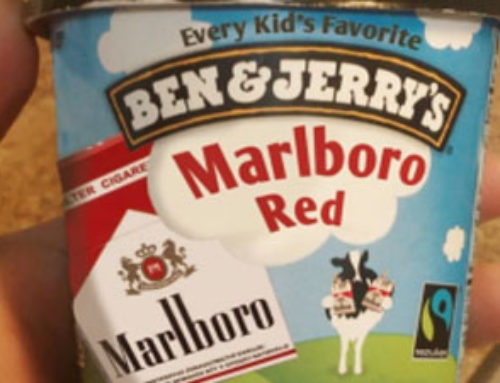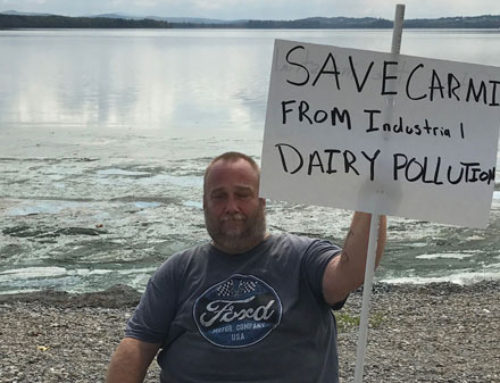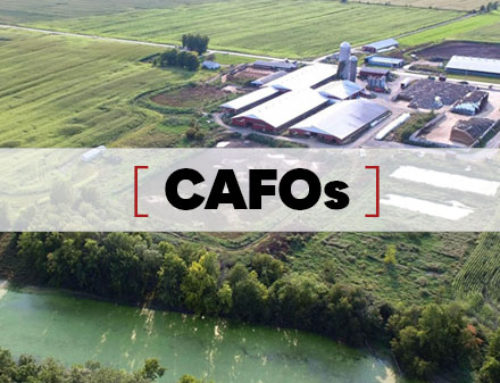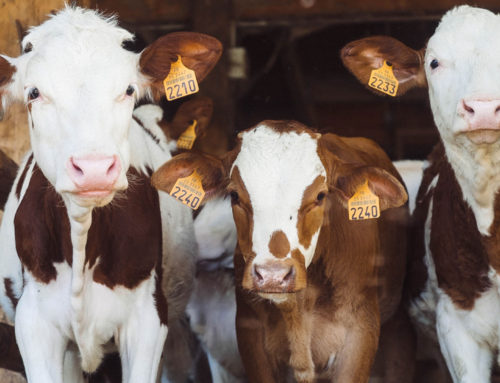By Michael Colby
Regeneration Vermont has spent the last seven months reviewing both federal and state data on the growing problem that is antibiotic-infected dairy and dairy-derived meat products (more than half the U.S. meat supply now comes from culled dairy cows), including the submission of numerous public records requests, interviews with regulators, farmers and farmworkers, veterinarians and public health officials. While not wanting to steal the thunder from the release of the full report, it is essential that the baseless claims that “antibiotics aren’t a problem in Vermont” not be allowed to stand without challenge.
Fact: If you consume non-organic dairy products you are consuming antibiotic residues. The U.S. Food & Drug Administration sets tolerances for these antibiotics – not bans. Thus, for each of the dozens of approved dairy cow medications, there are levels that are deemed “acceptable” for human consumption via the dairy products. Interestingly, these levels are set based on numerous factors, including human health impact and, extremely important for dairy, the impact on the dairy product itself. Many dairy products, especially yogurt, rely on natural bacteria and enzymes to exist, and, if antibiotic residues are too high, these necessary cultures will be killed off. So it’s not a matter of antibiotics or no antibiotics with so-called conventional dairy products, but rather how much or how many are we consuming.
Antibiotics are used extensively on Vermont’s confinement dairies, especially the growing number of these farms that warehouse thousands of cows in conditions that breed the maladies that require antibiotics to keep the cows in production, particularly udder infections (mastitis) and respiratory problems. Unfortunately, the Agency of Agriculture does not keep track of this antibiotic use, keeping the total usage figures locked up and private between the farms and their veterinarians. It’s this kind of “see no evil, hear no evil” approach from the Agency that allows them to flourish in their role as cheerleader-in-chief for industrial dairies rather than regulating and policing their activities.
The Agency of Agriculture likes to comfort its see-no-evil-self by citing its official reports of antibiotic-infected loads that are dumped in the state. It’s true, these officially-reported violating loads are relatively few when compared to the total. But it doesn’t tell the real story, since farms and farmworkers simply do not report loads that are infected. Instead, they dump them rather than report them, a scenario made all the more economically possible since the price of the milk is so low. These contaminated loads are referred to by farmworkers and truckers as “hot loads,” and into the manure lagoons they go, destined for eventual spreading on farm fields and crop land.
Our review of the last six years of officially reported antibiotic-infected loads of Vermont-based milk is quite disturbing, including processing and sale of at least one infected load (St. Albans Co-op/Ben & Jerry’s), levels so high that the corporation supplying the test kits called them “off the charts,” and disgraceful reasons given for the violations (“the Mexicans did it”). In 2010, for example, there were over 600,000 gallons of officially-reported antibiotic-infected milk dumped in the Vermont, almost all of it going to just two farms’ manure pits for “disposal.”
Vermont Public Radio recently went on a tour of Vermont’s biggest farms at the request of a veterinarian who wanted to “set the record straight” about Regeneration Vermont’s claims. Ironically, the veterinarian, Dr. Stephen Wadsworth, and his firm, Northwest Veterinarian Associates, were the target of an FDA enforcement action in 2013, in which repeated antibiotic violations were documented, including failures to “make a careful diagnosis and evaluation of the conditions for which the drug is to be used,” to “establish a substantially extended withdrawal period prior to marketing of milk, meat, eggs, or other edible products,” and to “take appropriate measures to assure that assigned timeframes for withdrawal are met and no illegal drug residues occur in any food-producing animal…”
Not exactly the poster-vet for “setting the record straight.”
Moreover, of the four farms featured in the tour, two are repeat antibiotic violators (Magnan Brothers Dairy and Howrigan Dairy), one has had a migrant worker die from being dragged into the farms manure disposal apparatus (Howrigan) and yet another has a family member who has been a long-time paid lobbyist for agri-chemical giants like Monsanto and Syngenta (Laggis Farm).
Not exactly the poster-farms for “setting the record straight.”
Vermont: We have a problem. And it begins with a regulatory mindset that is doing little more than sticking its collective heads in the sand and then declaring that they “see nothing.” But that’s what happens when you don’t look.
Rest assured, Regeneration Vermont is looking. And digging. And reporting. Stay tuned.




